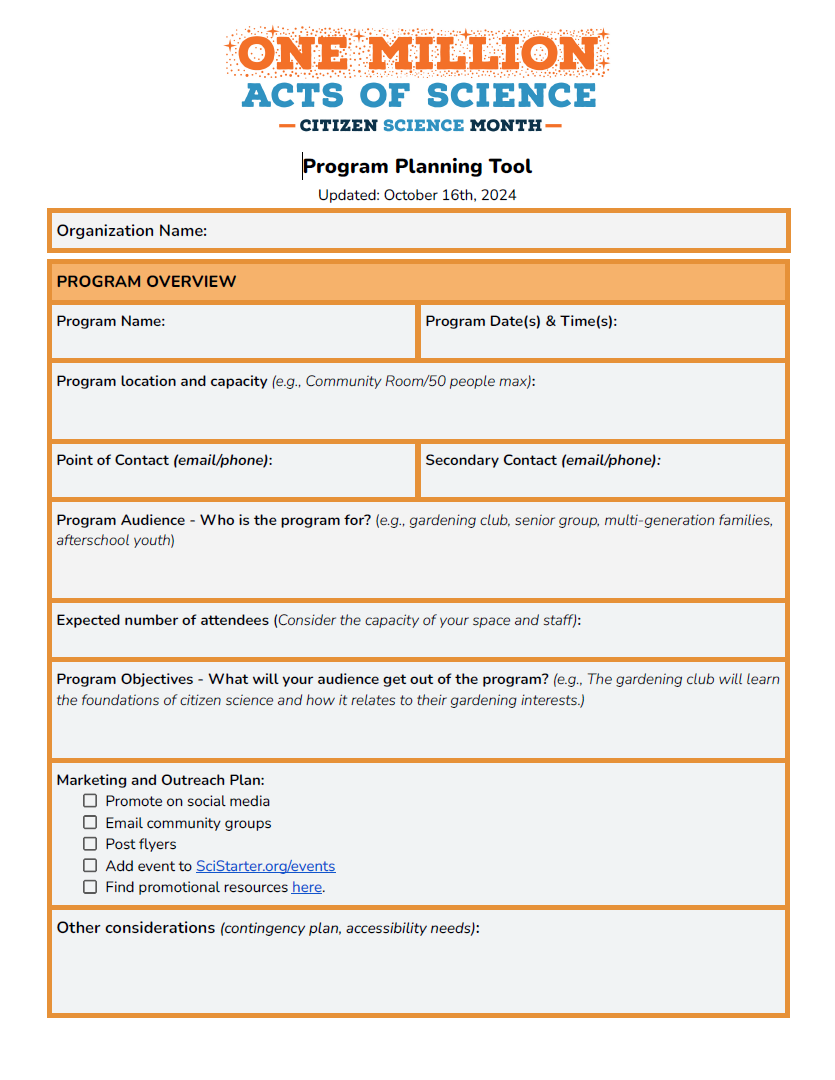Planning and Promotional Resources
Scroll down the page to find promotional resources and tips for using citizen science to bring science to life at your library (with or without citizen science library kits)!
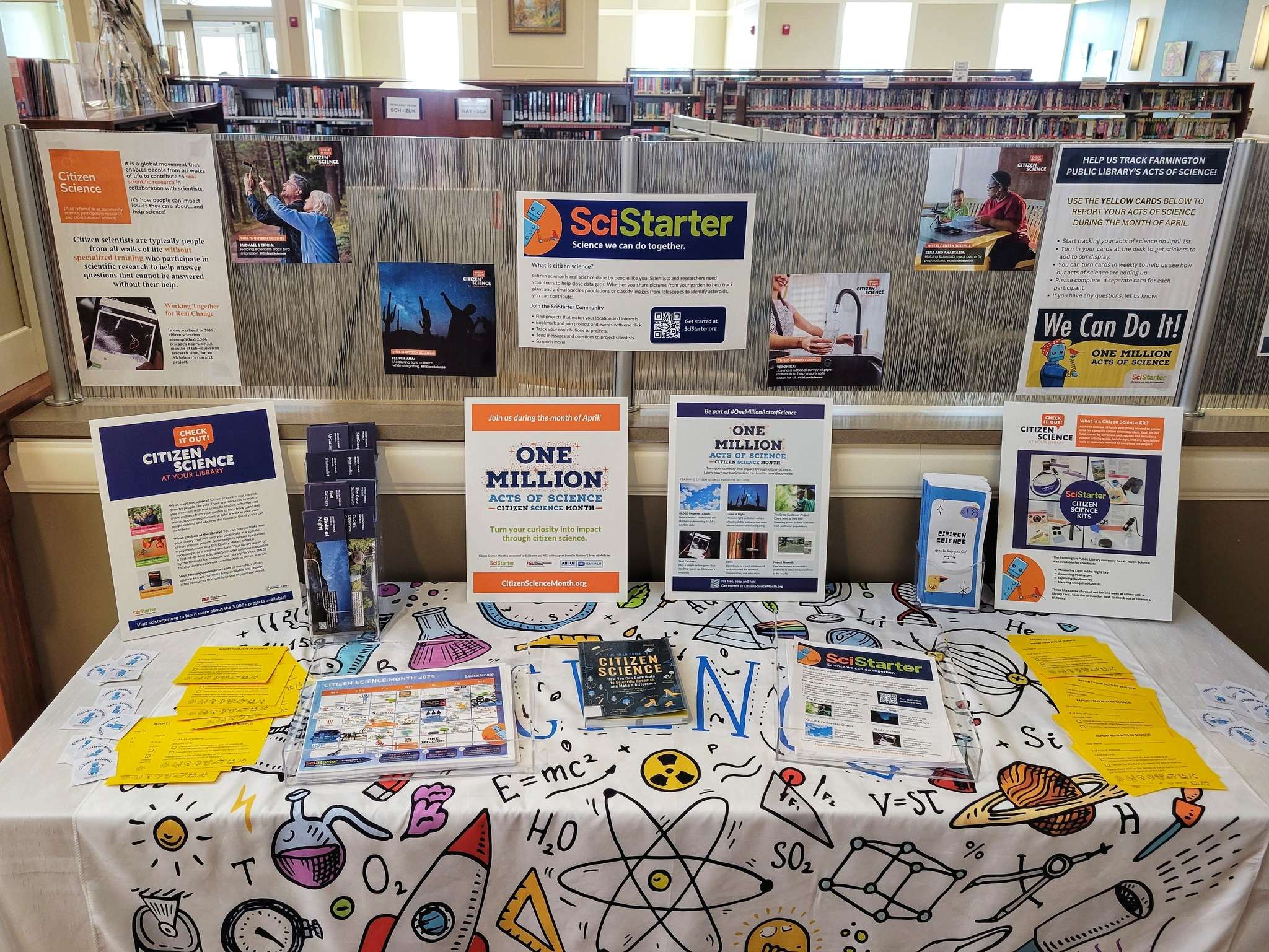
Image credit: Branson Merrill, SciStarter Ambassador, Farmington Public Library, Farmington, Missouri
How To Get Started
We understand that each Library is unique and has various capacities and interests. We aim to provide options for all circumstances. If you have a need that is not currently addressed, please share it with us! Email us at LibraryNetwork@SciStarter.org.
If you are new to citizen science, we recommend your start by completing the Foundations of Citizen Science online tutorial. This tutorial and training will walk you through the basics, prompt you to test out a project or two, and reward you with a personalized digital badge.
Follow up with the Libraries as Community Hubs for Citizen Science tutorial, updated in July 2025, to get more specifics on current support, relevant program examples, and more.
Lastly, materials are launched and updated all the time, for the most up to date information and professional development opportunities, join the Library Network.
Is your community interested in a particular topic, such as gardening or astronomy, health or the environment? Hold a community listening session or use survey templates to gather input on local priorities (e.g., environment, health, history).
Use the SciStarter Project Finder to filter for projects of interest. Or browse Event Recipe Cards with step-by-step project instructions. You’ll find tips to discuss the project’s scientific goals, and suggested follow-up activities to sustain engagement and to follow the project’s progress and outcomes in these cards. Consider also the resources on the “Facilitate Programs” tab on this page for additional support for particular projects and programs.
Note: We highly recommend you test out projects independently before choosing to introduce them to your attendees/visitors. You don’t need to be an expert – that’s what SciStarter is for – but a general familiarity will help.
Below is a short list of program examples that have been tested by members of our Library Network and the SciStarter team. We encourage you to find activities that fit your library’s capacity. If you try something not on this list, tell us about it!
- Supplement existing STEAM programs with a follow up citizen science project for attendees. For example, during an astronomy program, do a brief introduction to Globe at Night or Dark Energy Explorers and send them off with flyer on how to get started.
- Host an “Introduction to Citizen Science” event using SciStarter’s ready-to-go presentation and facilitator guide from the Foundations of Citizen Science training.
- Set up a display with various citizen science materials, such as topical books, flyers, science tools, take and make mini kits (The Great Sunflower Project is great for this!), bookmarks, etc. See the “Promote” tab for downloadable materials.
- Invite a local expert (on topics such as birds, astronomy, or pollinators) to present at your library, then follow up with a related citizen science project. Consider also Skype a Scientist as a resource for finding subject matter experts.
- Organize a fun competition like a Stall Catchers “Catchathon” at library computer stations. Use this step-by-step guide from the project leaders.
- Lead a pollinator party at a community garden and teach participants how to contribute to projects like the Great Sunflower Project. Check out our instructional video for planning your own Pollinator Palooza.
- Help a Girl Scout troop earn their “Think Like a Citizen Scientist” badge. Check out the SciStarter hub for Girl Scouts for more information on what projects qualify. There are also several applicable patch programs.
- Invest in Citizen Science Kits to circulate through your library of things. This is a heavy lift, but a well-tested method of passive engagement that may lead to increased interest.
Citizen Science Month (April) is our annual celebration of collective impact through participation in science research. We want you involved! Check out CitizenScienceMonth.org for more information any time of the year.
Planning Resources
Is your community interested in a particular topic, such as gardening or astronomy, health or the environment? Find related projects or browse Event Recipe Cards with step-by-step project instructions, tips to discuss the project’s scientific goals, and suggested follow-on activities to sustain engagement and to follow the project’s progress and outcomes!
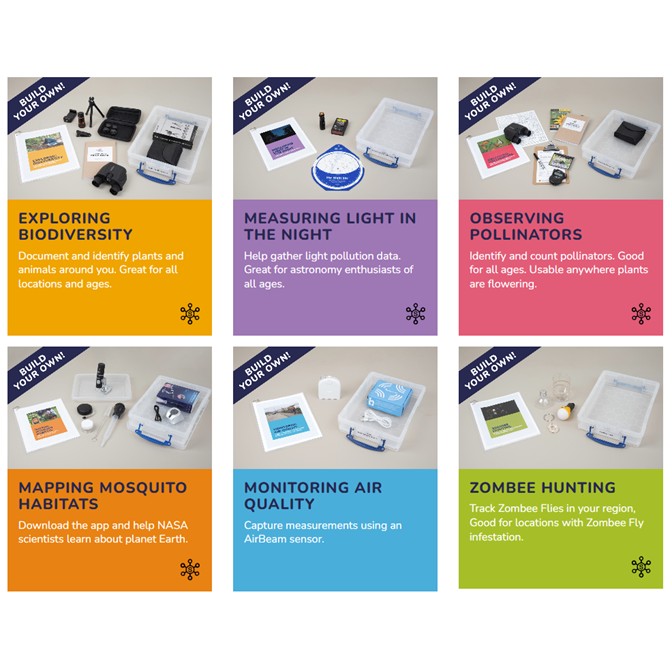
Citizen Science Kit Building Guides
Put together a kit of materials for citizen science projects, a common “Library of Things” resource.
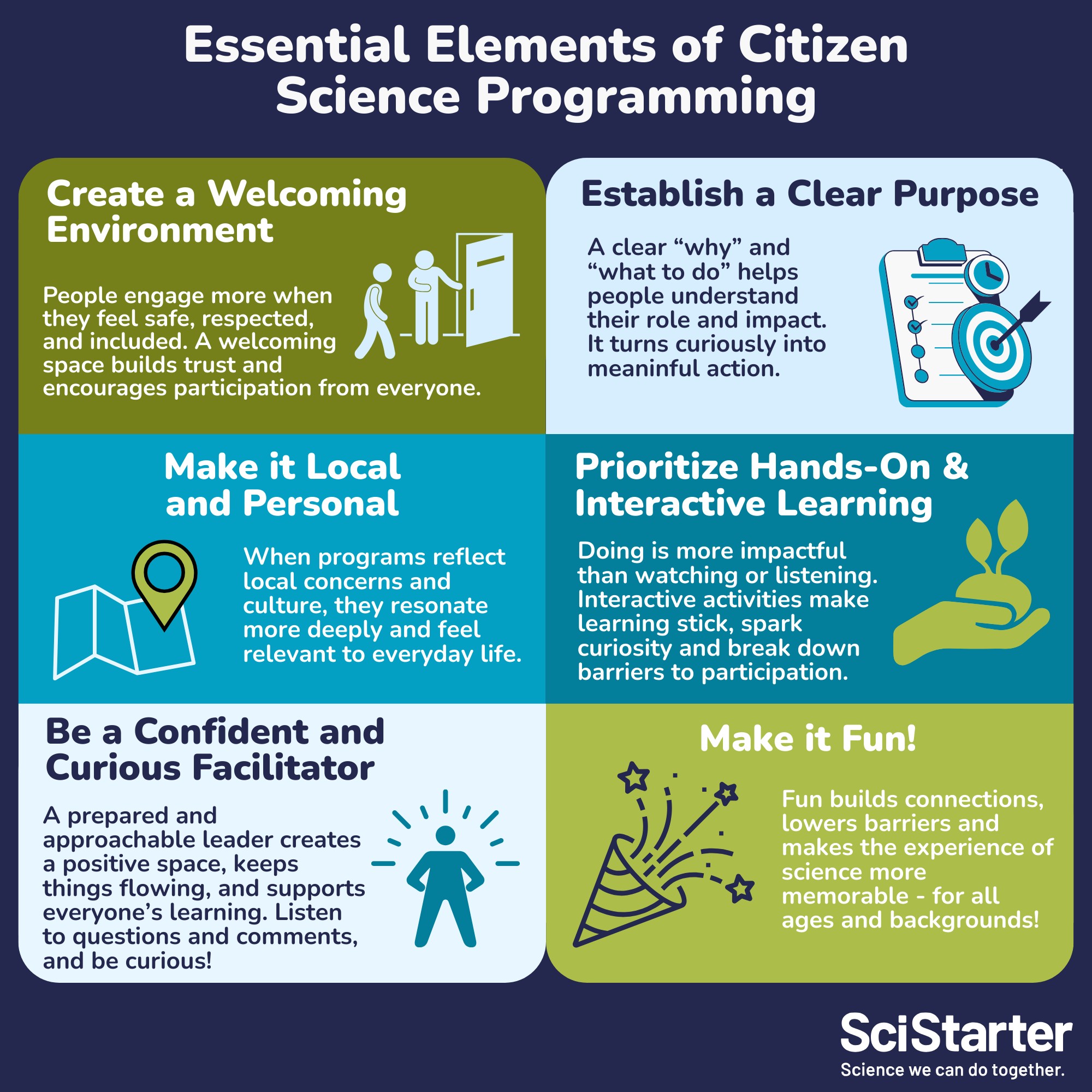
Essential Elements of Programming
This guide outlines key practices for creating citizen science programs that are inclusive, locally relevant, and deeply engaging.
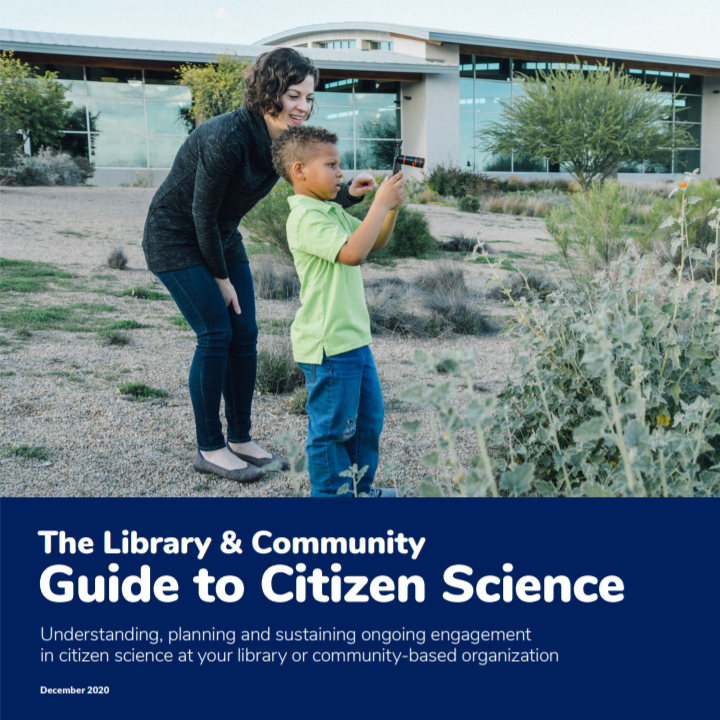
The Library and Community Guide to Citizen Science
A comprehensive guide to planning and sustaining engagement in citizen science (Developed in 2020).
Event Recipe Cards
Plan your event in minutes! Choose a project that aligns with your community’s interests (and your capacity)!

GLOBE AT NIGHT PROGRAM
Host a Star Party to Measure Light Pollution
Age Group: teens and adults
Event Timing and Location: 30 minutes, outdoors, at night

GREAT SUNFLOWER PROJECT PROGRAM
Host an Observation Event to Count Pollinators
Age Group: all ages
Event Timing and Location: 15 minutes, outdoors
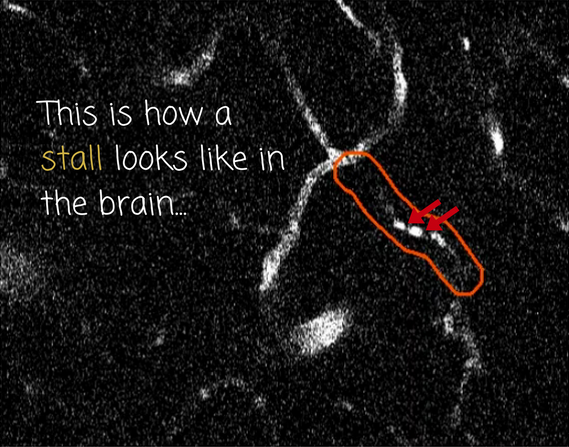
STALL CATCHERS CATCH-A-THON
Host a Catch-a-thon to Advance Alzheimer’s Research
Age Group: teens and adults
Event Timing and Location: 1 hour, indoors, on computers
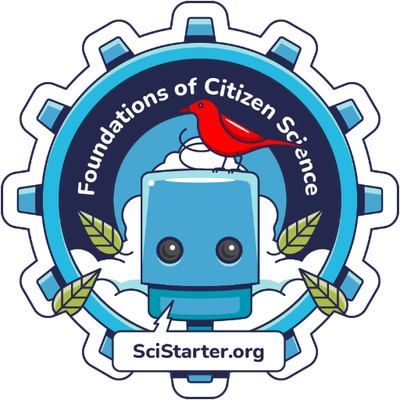
FOUNDATIONS OF CITIZEN SCIENCE
Help People Learn About and Experience Citizen Science
Age Group: Teens and Adults
Event Timing and Location: 1 hour, indoors
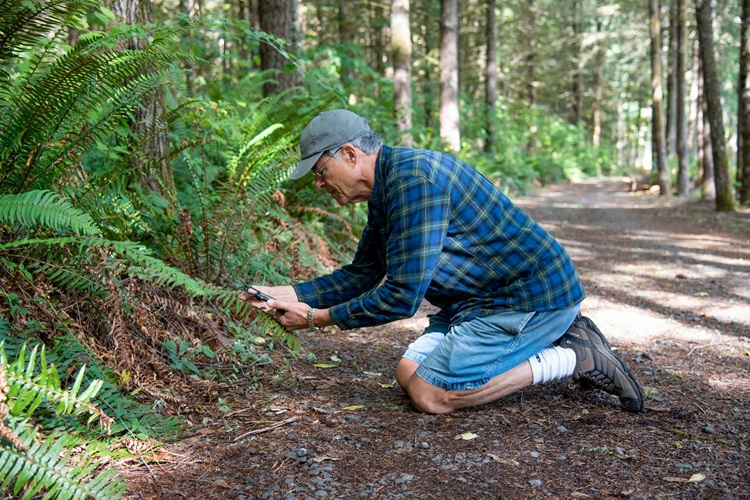
INATURALIST PROGRAM
Host a Data-gathering Event About Local Biodiversity
Age Group: all ages
Event Timing and Location: 1 hour, outdoors

iSeeChange
Share your experiences and collect data to help our communities
Age Group: Teens and Adults
Event Timing and Location: 30 minutes, outdoors
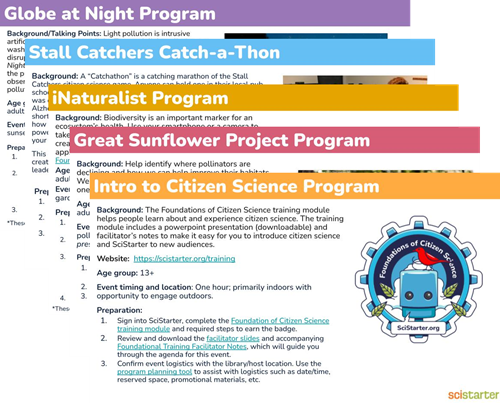
See all Event Recipe Cards
Visit our Google Drive to explore all of our Event Recipe Cards
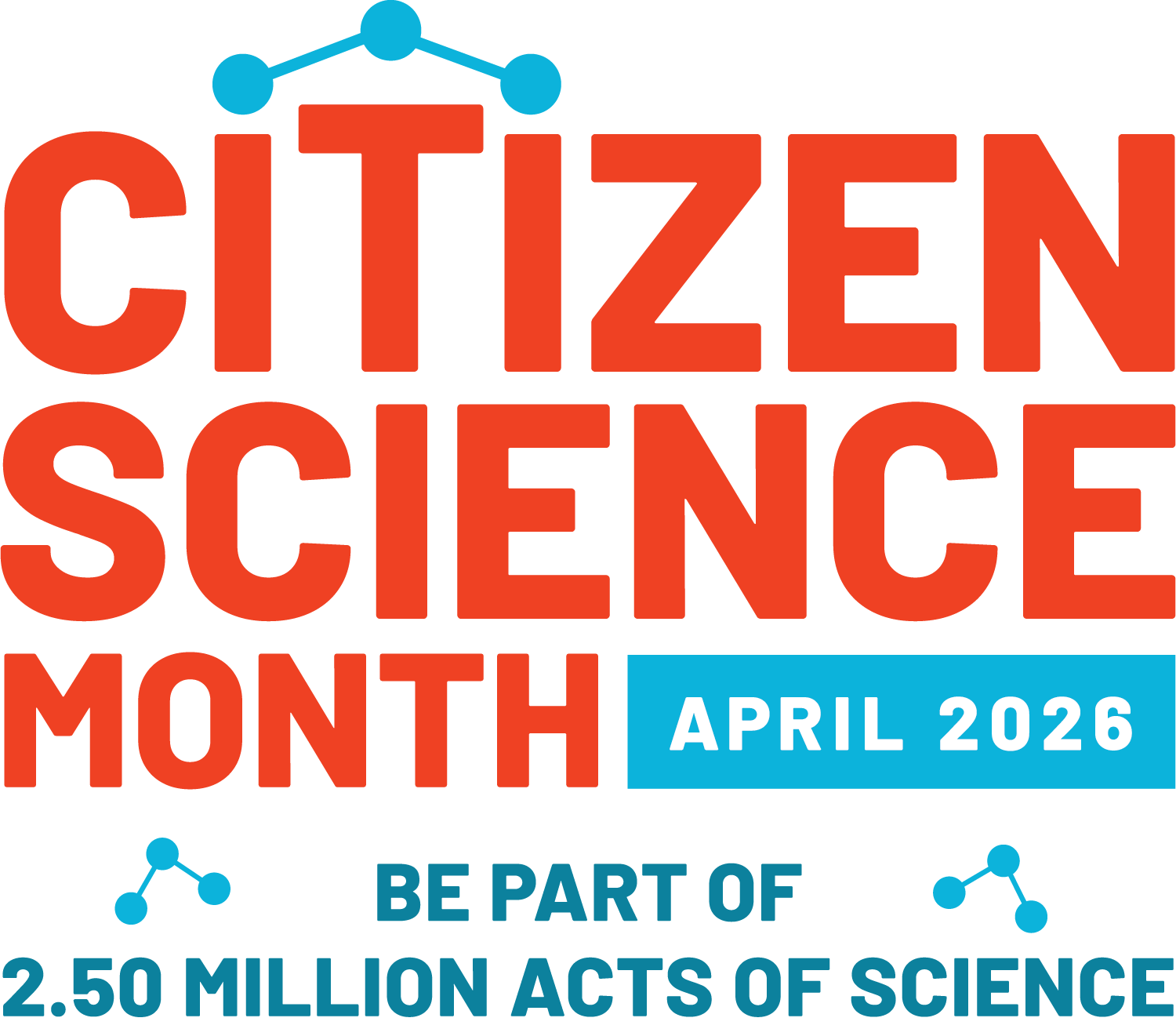
Interested in planning Citizen Science Month (April) or America250 programming?
Citizen Science Promotional Materials

Check It Out Logo
Program logo: Check It Out Program Logo that can be used in various program promotions.

Check It Out Poster
Set of two posters: Check It Out: Citizen Science at your Library program description poster and logo poster.

Feedback Posters – 18×24
Three different feedback posters that invite people to share their experience with citizen science using sticky notes.

SciStarter Poster – 18×24
Promotes participation in citizen science and introduces six featured projects on SciStarter.

Pollinator Poster
Promotes participation in projects focused on pollinator activity.
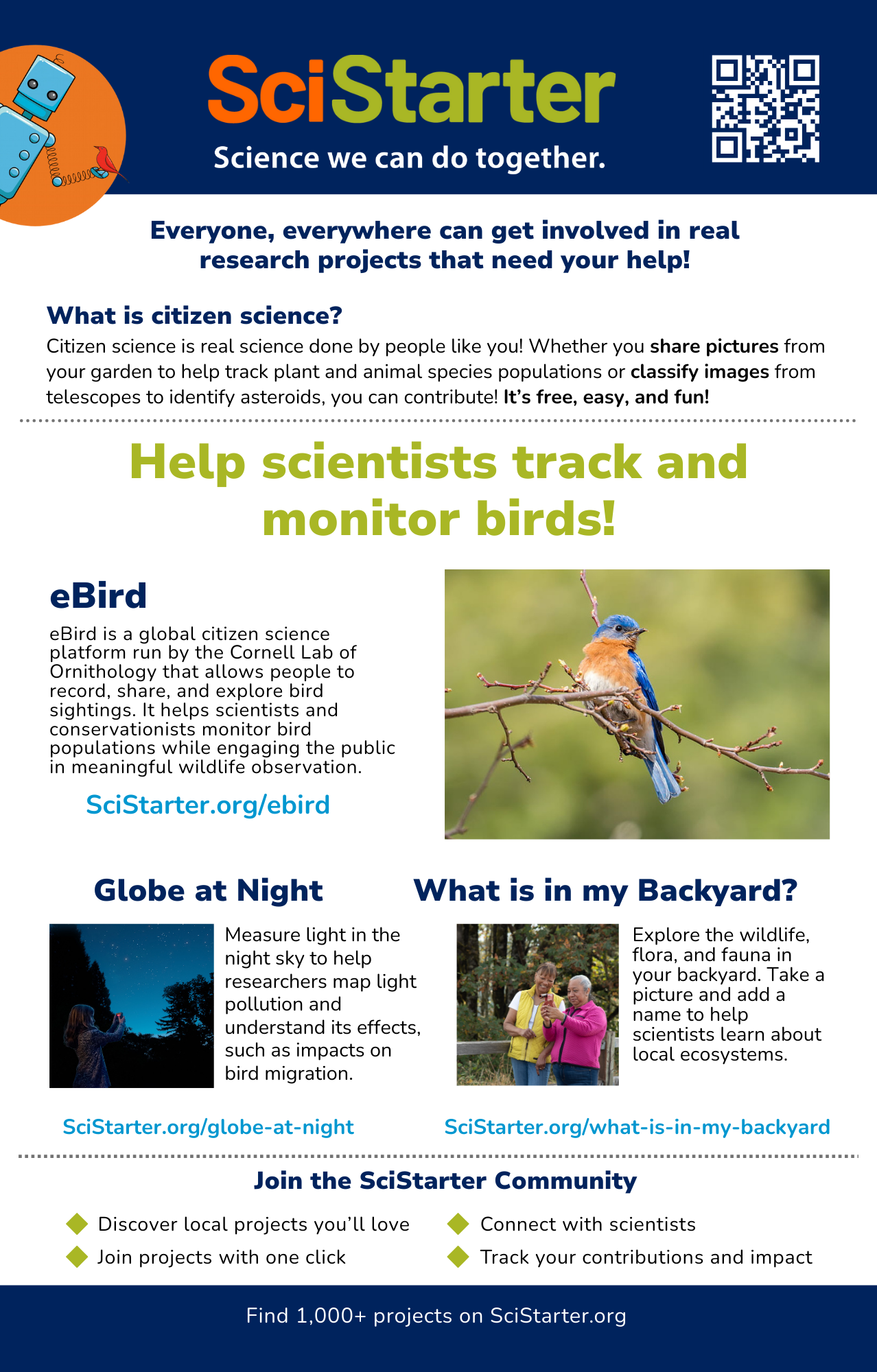
Bird Poster
Promotes participation in projects focused on bird activity.

Bookmarks
Set of four double-sided bookmarks featuring different citizen science projects. 2.5×8.5 inches.

Stickers
Round 1 ⅔-inch stickers. For use with Avery template 5293.

Buttons
Artwork for 3-inch, 2.25-inch and 1.25-inch buttons.

BookLists
A set of three booklists to connect reading to citizen science topics
Promo Photos and Social Media Assets

Promo Photos
Photos of citizen science in action that can be used in flyers, posters and other marketing materials.

Social Media Assets
Images to use, formatted for social media including Instagram, Facebook, X and LinkedIn.
Citizen Science Kit Promotional Materials
If you’re looking for kit-specific promotional materials, check out the build-a-kit page. Each kit has a set of resources, including rack card designs, shelf-talkers, bookmarks, and more.
Facilitator Guides
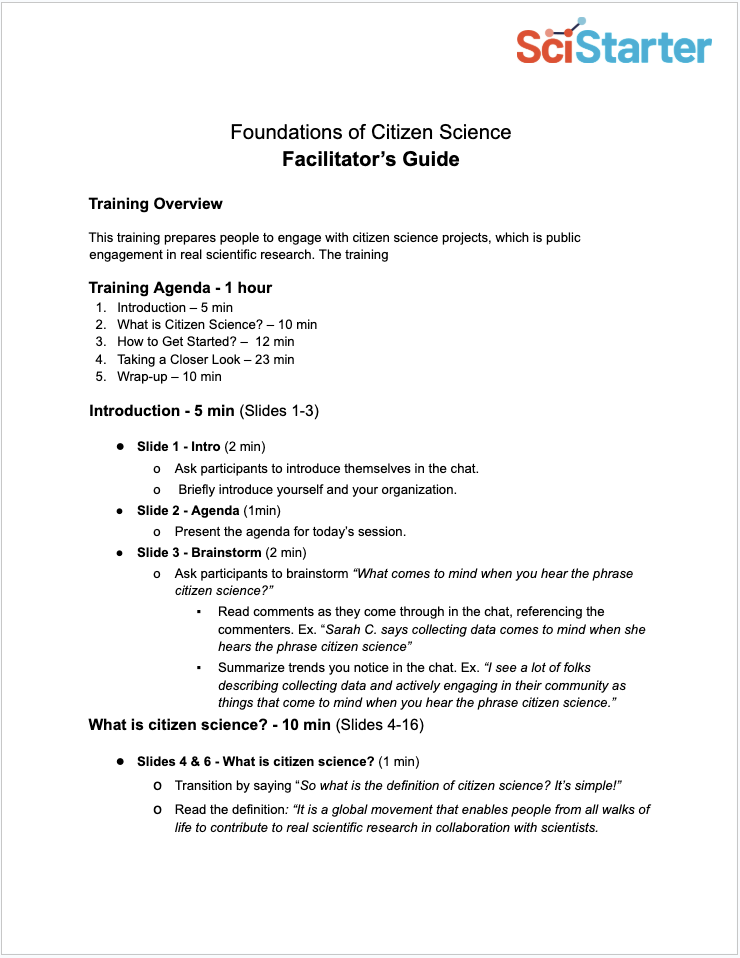
An Introduction to Citizen Science: Slides and Guide
Based on the Foundations of Citizen Science Training Module, this guide and presentation is designed to help you facilitate an introduction to citizen science for your audience. Download the slides to customize. For example, you may want to insert different practice projects that relate more to your audience. We suggest you include time to demonstrate how to sign up for a SciStarter account.

Anytime

Anywhere

Foundations of Citizen Science, Customizable

Requires projector
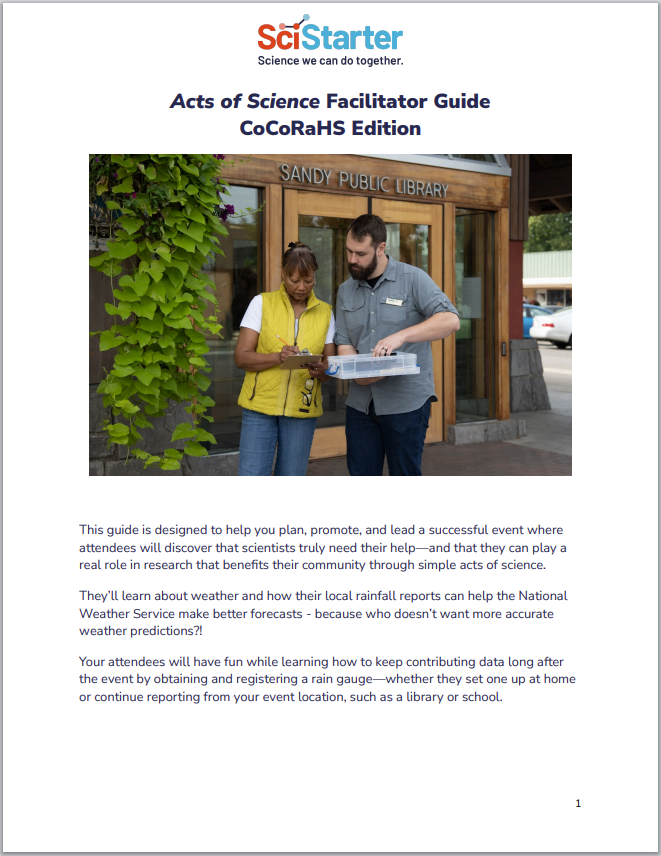
Acts of Science Facilitator Guide: CoCoRaHs Edition
This guide is designed to help you plan, promote, and lead a successful event where attendees will discover that scientists truly need their help—and that they can play a real role in research that benefits their community through simple acts of science.

Daily Monitoring

North America

Precipitation & Weather, Supplement to Community Gardens, Data Literacy

Requires specific low-cost tool, printable data sheets, external account required
Basic Recipes

Project-Specific Event Recipe Cards
These recipe cards are designed to support your planning process. However, many include reference to facilitation tools.

Anywhere

Various requirements



